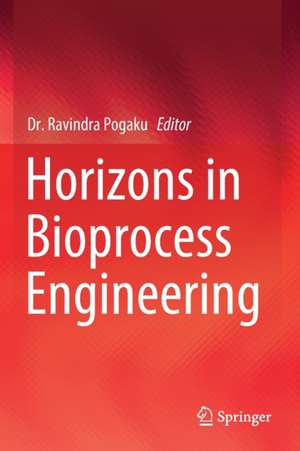Horizons in Bioprocess Engineering
Editat de Ravindra Pogakuen Limba Engleză Paperback – 24 oct 2020
| Toate formatele și edițiile | Preț | Express |
|---|---|---|
| Paperback (1) | 643.84 lei 6-8 săpt. | |
| Springer International Publishing – 24 oct 2020 | 643.84 lei 6-8 săpt. | |
| Hardback (1) | 650.19 lei 6-8 săpt. | |
| Springer International Publishing – 24 oct 2019 | 650.19 lei 6-8 săpt. |
Preț: 643.84 lei
Preț vechi: 757.46 lei
-15% Nou
Puncte Express: 966
Preț estimativ în valută:
123.24€ • 133.91$ • 103.59£
123.24€ • 133.91$ • 103.59£
Carte tipărită la comandă
Livrare economică 21 aprilie-05 mai
Preluare comenzi: 021 569.72.76
Specificații
ISBN-13: 9783030290719
ISBN-10: 3030290719
Pagini: 354
Ilustrații: XI, 354 p. 79 illus., 54 illus. in color.
Dimensiuni: 155 x 235 mm
Greutate: 0.51 kg
Ediția:1st ed. 2019
Editura: Springer International Publishing
Colecția Springer
Locul publicării:Cham, Switzerland
ISBN-10: 3030290719
Pagini: 354
Ilustrații: XI, 354 p. 79 illus., 54 illus. in color.
Dimensiuni: 155 x 235 mm
Greutate: 0.51 kg
Ediția:1st ed. 2019
Editura: Springer International Publishing
Colecția Springer
Locul publicării:Cham, Switzerland
Cuprins
Part (I): Biomass and bioenergy.- Chapter 1: Studies on esterification optimization of high FFA content Pongamia oil using Box-Behnken design.- Chapter 2: Lipase-catalyzed Synthesis of Caffeic Acid Bornyl Ester.- Chapter 3: Prospects and potential of Calophyllum inophyllum as a renewable feedstock for biodiesel production.- Chapter 4: Conversion of Biomass to Methanol and Ethanol.- Chapter 5: Scalable Technologies for Lignocellulosic Biomass Processing into Cellulosic Ethanol.- Part (II): Novel technologies of Bioprocess engineering.- Chapter 6: An insight into bioprocess engineering in the field of Pharmacy.- Chapter 7: Role of Biofilms in Bioprocesses: A framework for multidimensional IBM modelling of heterogeneous biofilms.- Chapter 8: Biofunctional nanoparticles for protein separation, purification and detection.- Chapter 9: Conversion of glycerol to valuable products.- Chapter 11: Furfural- A Promising symbiotic businessmodel for Integrated biorefinery.- Part (III): Applications of Biotechnology.- Chapter 12: Role of White Biotechnology in 2G biofuels: Biocatalytic Process Development for the Hydrolysis of Lignocellulosic Biomass.- Chapter 13: Systems metabolic engineering approach for recombinant protein production in microbial cell factories.- Chapter 14: Immobilized biocatalysts in Bioethanol Production: Scale-up Opportunities for Commercialization.- Chapter 15: Biotechnology for environmentally benign gold production.- Part (IV): Bioreactor Engineering.- Chapter 16: Bioreactor design – principles.- Chapter 17: Bio waste treatment.- Part (V): Transfer learning & IP rights.- Chapter 18: Intellectual property rights in industrial bioprocess engineering.- Chapter 19: Transfer learning combined with high throughput experimentation framework for integrated bio refinery.
Notă biografică
Ravindra Pogaku, Ph.D., P.Eng., is a research professor at University of South Carolina, professor of Chemical and Bioprocess Engineering and Graduate Program Director in the at University Malaysia Sabah and professor of Chemical Engineering at Osmania University, India respectively. He was a visiting professor at Cornell University and Penn State University. He is a consultant for SAARP LLC, which provides training solutions to all the stake holders such as industry, academia, non-governmental organizations and policy makers. Dr. Ravindra is the recipient of awards from the International and national institutions. He is the author and editor of Chemical and Bioprocess Engineering books. Dr. Ravindra is a member of AICHE (American Institute of Chemical Engineers) and was recognized in 2009 as the distinguished Chemical Engineer by the Indian Institute of Chemical Engineers.
Textul de pe ultima copertă
This book is divided into four parts that outline the use of science and technology for applications pertaining to chemical and bioprocess engineering. The book endeavors to help academia, researchers, and practitioners to use the principles and tools of Chemical and Bioprocess Engineering in a pertinent way, while attempting to point out the novel thoughts associated with the brain storming concepts encountered. As an example, the ability to use case studies appropriately is more important, to most practitioners.
- Provides a comprehensive overview of Bioprocess Engineering
- Features novel and key concepts and applications in Bioprocess Engineering for sustainable living
- Written in four parts for researchers, academia and practitioners within the Chemical and Bioprocess Engineering field
Caracteristici
Provides a comprehensive overview of Bioprocess Engineering Features novel and key concepts and applications in Bioprocess Engineering for sustainable living Written in five parts for researchers, academia and practitioners within the Chemical and Bioprocess Engineering field
